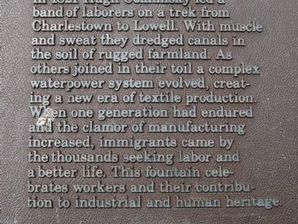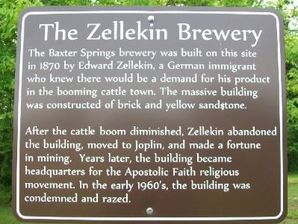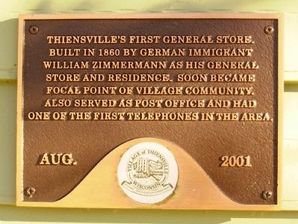Memorials

The Justus Bissing, Frederick Karlin, and
Frederick Koerner families stayed on this
site from March 1 till April 8 of 1876, while
they were building their sod dugouts in
nearby Katherinenstadt (Catherine). These
people were the first of nearly a
thousand German-speaking Catholics who
migrated to Ellis County from the Volga
River area of Russia during the late 1870's.
Other Volga-German villages formed
were Herzog, now Victoria (1876), Obermonjou,
which became Munjor (1876), Pfeifer (1876... Read More

With the discovery of coal in Cherokee and Crawford Counties in the late 1860's, thousands came to work the mines. Some came from American towns and cities but most were immigrants from Europe. Over fifty nationalities settled in this area. Many landed at Ellis Island and continued here by railroad before heading out to the coal camps. Some came to find work. Some to escape repression. Some to find a new life in America. All were seekers.
What they found was not the "paradise on Earth... Read More

The 1st Deep Mine, Scammonville, KS
In 1874 four brothers from Illinois, the Scammon brothers, pioneered new methods of mining coal in southeastern Kansas, digging the first mine shaft in Cherokee County. Although many doubted that their room-and-pillar system would work in such shallow mines, this Cherokee County mine was soon producing 40 carloads of coal a day. Within a few years, underground mining became the principal method of coal mining in southeastern Kansas.
The Scammon brothers mined... Read More

In 1821 Hugh Commisky led a band of laborers on a trek from Charlestown to Lowell. With muscle and sweat they dredged canals in the soil of rugged farmland. As others joined in their toil a complex waterpower system evolved, creating a new era of textile production. When one generation had endured and the clamor of manufacturing increased, immigrants came by the thousands seeking labor and a better life. This fountain celebrated workers and their contributions to industrial and human heritage.

Just as the river has for centuries flowed across the falls of the Delaware, so have waves of people streamed into the Trenton area to settle, raise families and make a living. Still more people have passed through this hub in the landscape – along the river and roadways, across the ford, aboard ferries and over bridges.
Native Americans were drawn here by nature’s abundance. As seasonal visits turned into extended stays, American-Indian camps on the riverbanks grew into villages. Later,... Read More

In the early 20th Century, the Wichita Falls oil boom attracted several immigrant Russian Jewish families seeking a better life. One such immigrant to the town, Morris Bernard Zalefsky (1901 - 1995), began to learn the jewelry trade from his uncle, Sam Kruger. Zalefsky opened his own store inside a drug store in Graham, but due to Klu Klux Klan activity in the area, he returned to Wichita Falls in 1924.
Zalefsky Americanized his name to Zale, opened his own store at this location on March 29... Read More

The Baxter Springs brewery was built on this site in 1870 by Edward Zellekin, a German immigrant who knew there would be a demand for his product in the booming cattle town. The massive building was constructed of brick and yellow sandstone.
After the cattle boom diminished, Zellekin abandoned the building, moved to Joplin, and made a fortune in mining. Years later, the building became headquarters for the Apostolic Faith religious movement. In the early 1960's, the building was condemned... Read More

Built in 1860 by German immigrant William Zimmermann as his general store and residence. Soon became focal point of village community. Also served as post office and had one of the first telephones in the area.
Aug. 2001
